20 Jan know Your Fall Arrest Gear
Whether you are brand new to using fall protection or have been climbing for thirty years or more, knowing the best system for your application of work can be the difference of working another day and never climbing again. For many of us, we rely on our companies to provide the most adequate fall protection and mitigation of hazard, per OSHA regulation. While our safety managers have the best intention, variations in fall protection can be small but significant, particularly with lanyards, can easily be overlooked. Depending on your scope of work, you may find yourself in need of a few different styles of Lanyard for multiple jobs.
So, which is best for you?
What Is a Fall Protection Lanyard?
Before we dissect which lanyard may fit your practice best, let’s first define what a Fall Arrest Lanyard is. A Fall Arrest Lanyard is a personal lanyard system that has an integrated, active deceleration device which extends a person’s deceleration distance between 3.5 ft. or 5ft. depending on the device.
The two main categories we will cover are Shock-Absorbing Lanyards and Self-Retracting Lanyards.
Shock-Absorbing Lanyards
Shock-Absorbing Lanyards are the most common form of fall arrest across many industries. They are a tool that people gravitate toward for their ability to always be on your person and the flexibility of attaching to multiple anchor points while transitions across a structure.
Because they are so widely used, it is important that you understand which lanyard fits your criteria. The following will discuss the difference between Y-Style and V-Style Lanyards, as well as the difference between Type (or factor) 1 and Type (or factor) 2 shock absorbers.
Y-Style vs V-Style Lanyards
Shock Absorbing Lanyards are made of webbing that is designed to stretch or rip open to limit impact forces onto fall victim’s body. They often have two legs which can each be attached for 100% connection to your structure.
The two main categories of Shock-Absorbing Lanyards are Y-Style and V-Style Lanyards. Both are often 6′ long and are often made of a woven material or cable. Each Lanyard use a deceleration device, but the Y-Style Lanyard has an external shock absorber, while the V-Style has a shock absorber built into each leg.
Depending on the manufacture, a lanyard typically takes 500 lbs of force to engage the shock absorber. For this reason, if you are using the V-Style Lanyard, you must park the lanyard legs at a distance of around 3′ from each other, otherwise you may run the risk of doubling deployment force (500 lbs. for each leg) would have to activate them using 1000 lbs of force.
Y-Style Lanyards vs. V-Style Lanyards Comparison
| Y-Style | V-Style |
|---|---|
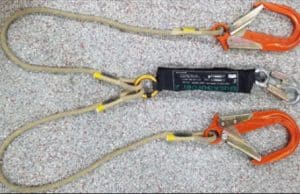 |
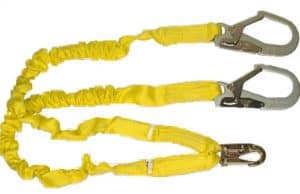 |
| One Central Shock absorber | Two independent shock absorber |
| Shock absorption pack is directly on dorsal | Shock absorption is built in to each leg |
| Can attach both legs (if desired) at same level | Can attach both legs (if desired), but must be at different levels |
Type 1 vs. Type 2
The other thing to consider with shock absorbing lanyards is whether it is a Type 1 or Type 2 classification.
A Type 1 Shock Absorbing Lanyard is meant to deploy a 3.5ft. shock absorber when a force of 500 lbs. is applied.
If you are working above an area and the only suitable anchor is at your feet, you would want a Type 2 Shock Absorbing Lanyard. Because you are tying in at your feet, you are going to fall a greater distance.
The Type 2 lanyard will limit the forces on your body by adding more shock absorption when the pack engages. Because of this your fall distance will increase, but the amount of force to the body will remain manageable.
A Type 2 Lanyard can be used in place of a Type 1 Lanyard, but a Type 1 Lanyard cannot be used in place of a Type 2 Lanyard. Always anchor your fall arrest lanyards as high as practical. Additionally, some type two lanyards meet the requirements of a type 1 lanyard and can be used in both factor 1 and factor 2 situations.
The Safety One Recommendation: Ideally a climber would have access to a wide variety of lanyards and make decisions based on the work they plan to do. We realize that isn’t always practical and would recommend looking for a lanyard that meets both the requirements for a type 1 and type 2.
| Type 1 | Type 2 | |
|---|---|---|
| Lanyard Length | 6′ | 6′ |
| Shock Absorber Length | 3.5′ | 5′ |
| Clearance Needed for 6′ Worker | 15.5′ | 17′ |
| Forces Exerted on Body | Less than 900 lbs | Less than 1350 lbs |
| Label Identification | Black Writing on White Label | White Writing on Black Label |
Self-Retracting Lanyard (SRL)
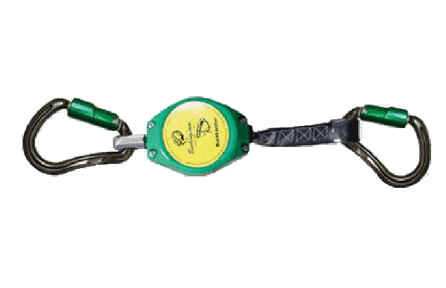 Self-Retracting Lanyards, also known as SRLs, Pucks, or Yo-Yos, are often used in a few industries with specific needs. The premise of the SRL is similar to that of a car seat belt. If you engage the device, it will lock up and stop your fall within 2′. Because of this, many people believe they are the best choice for them. Unfortunately, this becomes a pitfall for many reasons.
Self-Retracting Lanyards, also known as SRLs, Pucks, or Yo-Yos, are often used in a few industries with specific needs. The premise of the SRL is similar to that of a car seat belt. If you engage the device, it will lock up and stop your fall within 2′. Because of this, many people believe they are the best choice for them. Unfortunately, this becomes a pitfall for many reasons.
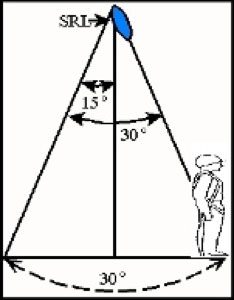 The SRL is meant to restrict your fall distance and the forces on the body, but only when used per manufacturer’s instructions. In order to use and SRL properly, you must be working directly under it or within a 30-degree cone. If you were to move away from this setting, the device will take longer to engage and you will consequently fall farther. If you are in an industry where SRLs are the best option, it is best that you use them in the highest suitable anchor and keep them directly above your head. Should you need to move out of the 30-degree cone, you should hook up another fall arrest device and carry on with work. SRLs are not to be used when horizontal movement is required.
The SRL is meant to restrict your fall distance and the forces on the body, but only when used per manufacturer’s instructions. In order to use and SRL properly, you must be working directly under it or within a 30-degree cone. If you were to move away from this setting, the device will take longer to engage and you will consequently fall farther. If you are in an industry where SRLs are the best option, it is best that you use them in the highest suitable anchor and keep them directly above your head. Should you need to move out of the 30-degree cone, you should hook up another fall arrest device and carry on with work. SRLs are not to be used when horizontal movement is required.
Calculating Fall Clearance with an SRL
Depending on your SRL, they may have an external shock pack. If it does, make sure you understand the addition to your fall clearance that you will need to fall without hitting anything below.
The average SRL is designed to stop you at 2′ of maximum free fall. Add on the height of a 6′ worker and the movement your harness will have, you are looking at close to a 9′ free fall, without factoring in an external shock pack or 3′ safety clearance which could all add up to a total of about 15′ from the pre-fall to post fall position.
The Safety One Recommendation: If you are working on a platform and have the ability to hook your SRL to an anchor directly above your head, this would be a great tool for you. If you are a tower climber or roof top worker who moves around the structure, we recommend extreme caution, as you are more likely to move out of the safe working area and defeat the device.
The Bottom Line
At the end of the day, it is the responsibility of the user to know and understand their personal equipment, despite if it was issued by a safety manager or not. If you can break down where your anchor points are and how far your fall distance is, you will be that much closer to staying both competent and safe at heights.
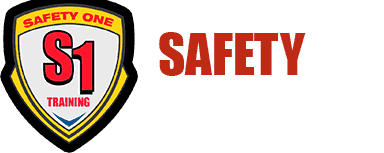
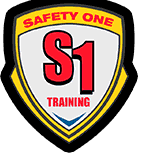
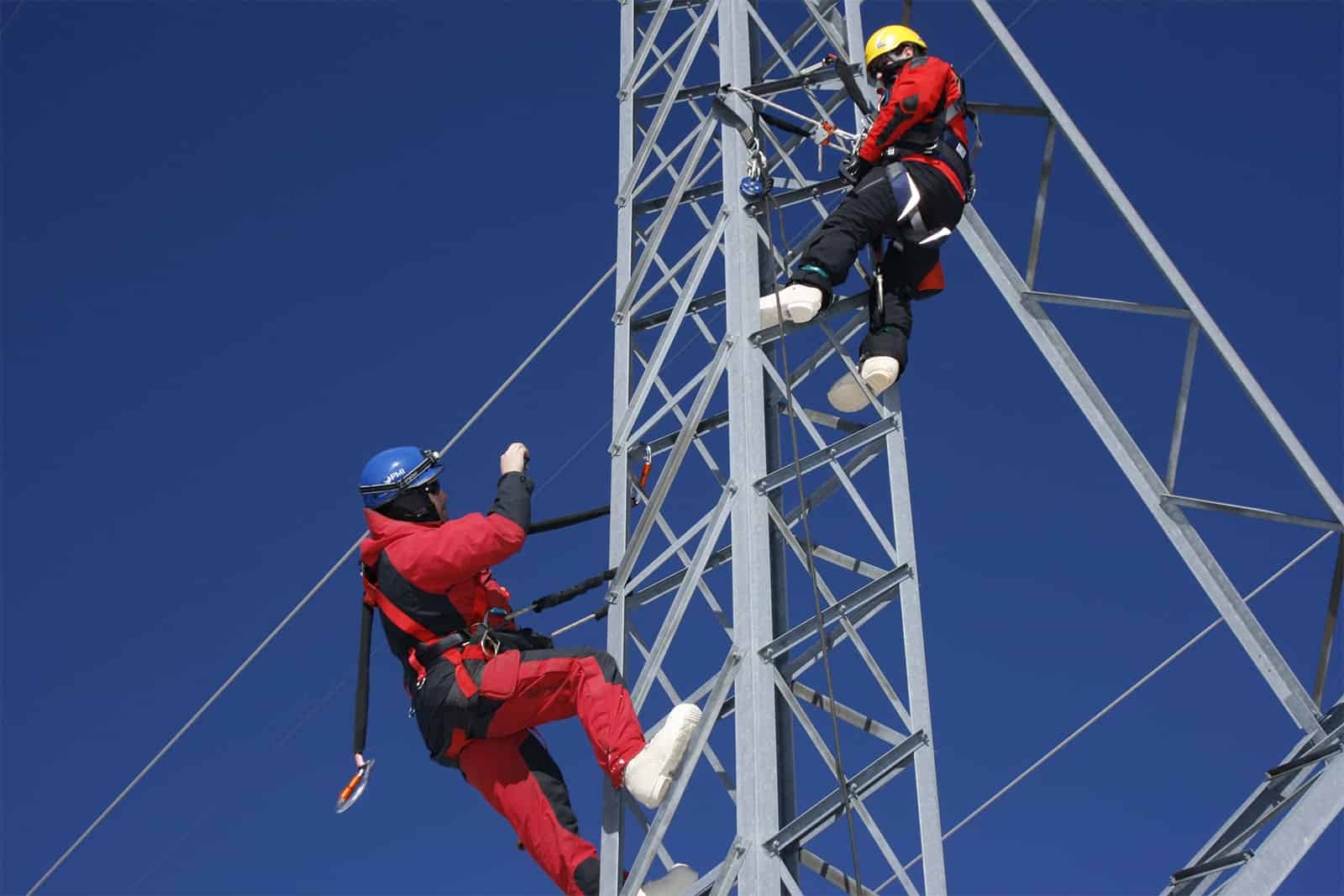
No Comments